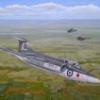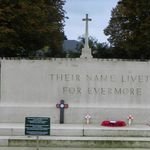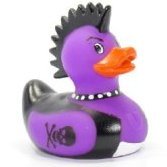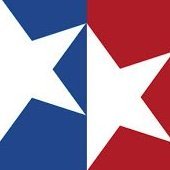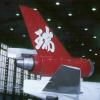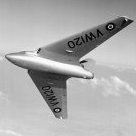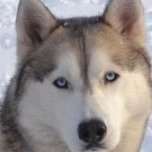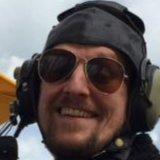Search the Community
Showing results for tags 'revell'.
-
Bell OH-58 Kiowa (03871) 1:35 Revell Based upon the successful Bell 206A Jetranger civilian helicopter, the Kiowa was an observation and fire support helo made for the US Army that served from the late 60s until 2017 when it was replaced by the much more attack focused AH-64 Apache. It was also used by some foreign operators, some of which are still in service. Its role began as a scout helo, but through successive upgrades the focus expanded to a more combative remit. The OH-58D was the variant that introduced a more powerful engine with a four-bladed rotor that was much quieter than the old 2-bladed unit, and this was topped by the new Mast Mounted Sight (MMS) that allowed the operator to sneak a peak over terrain without exposing the entire aircraft to enemy fire. The cockpit was also updated with Multi-Functional Displays (MFDs), although the old analogue instruments were retained for backup purposes. Later upgrades added two hardpoints for weapons carriage, one on each side of the airframe that could be fitted with modular Hellfire racks, .50cal machineguns, rocket pods or Stinger missiles. This is referred to as a Kiowa Warrior and has an unofficial designation of AH-58D. An upgrade programme was begun for the successor F model with substantial sensor and avionics upgrades, but this was cancelled in 2017 as the Army was trying to reduce the number of types in service in order to save costs. The Kit This is a re-release of a reboxed MRC/Academy tooling that dates from around 1995, and the MRC logo is still to be found on the sprues. Despite its age the detail is good, and the tooling hasn’t suffered from any noticeable wear over the years either. The kit arrives in the usual Revell end-opening box (yay!) and has a painting of a Desert Storm airframe passing over an Allied convoy near a town. Inside the box are four sprues in a greenish grey styrene, a clear sprue, a black flexible part for the gun pod, large decal sheet and instruction booklet with colour painting guide on the rear pages. Construction begins predictably with the cockpit with dual controls for the pilots, and showing the upgraded glass screens of the improved instruments. They both have rudder pedals, collective and cyclic sticks, with a decal for the instrument panel and centre console, plus a large equipment rack directly behind their seats that makes other helicopters look spacious. There are a couple of pilot figures included, and they’re made up from separate legs, torsos, arms and heads, with different poses for each of them and their hands on the controls. This should allow you some leeway to customise them as you see fit. The engine compartment is also built up with a number of parts portraying the basics, but as always with these things there will be more needed if you’re going to go for accuracy. With the two main internal assemblies complete, the fuselage will need painting with colours suggested in the instructions, after which you can close the fuselage, remembering to drill the holes for the additional sensors carried by the KFOR decal option. Doors for the crew and equipment access are added next with clear parts provided for the crew, and more holes for sensors needed for the KFOR option, then the main canopy is painted internally, has a centre roof console added, and is fixed in place with some suitable glue to enclose the cockpit. The clear roof panels will need to be tinted with a green shade beforehand, but that’s easily done with some clear green acrylic. The last glazed panel is the lower ground-view windows under the nose with a decal added at the front. Inside the fuselage are access panels to more equipment racks on the port side, which can be left open or closed, and the engine compartments that can be propped open using the supplied stays, and at this stage the skids are also added to the underside and the stabilising winglets are applied to the tail boom around the half way mark. The tail fin, two-blade tail rotor, IR detection turret, various antennae, cable cutters, lights and probes are fitted around the airframe, plus the sensors previously drilled out for the KFOR option if appropriate, then the rotor is made up. This begins with the rotor-head, which has a pass-through axle, actuators for pitch control, vibration reduction, then the four blades, on top of which the MMS with two clear lenses is fitted on a tapered base. With the majority of the airframe complete if not assembled, the weapons pods are begun, starting with the mounting brackets that take up a good number of parts for each side. Two twin launch rails are constructed with four hellfire missiles that have clear seeker heads, and the .50cal machinegun with its framework pod and large ammo canister are also built. Both options are shown on the port station, with the ammo box mounted on the side of the airframe and linked to the gun by the black flexible ammo guide. With these in place the rotor and MMS are installed to complete the build. Markings There are two decal options in the box with different schemes. The Desert Storm option is of course painted in Sand with the inverted V worn by Allied forces on each side, plus a Knight chess piece on the side doors. The KFOR option is painted Bronze Green with a white KFOR logo on its sides. Each airframe has a substantial number of stencils dotted over its exterior, all of which adds to the visual interest. The instrument decals consist of white details plus green for the MFDs that each pilot has in front of him. Decals are by Cartograf, which is a guarantee of good registration, sharpness and colour density, with a thin matt/gloss carrier film cut close to the printed areas. Conclusion This may be an older kit, but it still holds up against modern standards pretty well with nice raised and engraved detail on the fuselage, plenty of parts devoted to the interior and decent clear parts. Highly recommended. Revell model kits are available from all good toy and model retailers. For further information visit or
-
Hi all, This was an exercise in perseverance to bring a 1950s-era kit up to modern standards! Originally built for the Salty Sea Dog groupbuild back in April this year, build thread is here: The USS Boston was a Baltimore-class WW2 cruiser which was converted (along with USS Canberra) into the first guided missile cruiser in service. Integrating the Terrier AA missile system along with advanced radars and guidance systems for the time, it quickly became obsolete but persisted in service to the end of the Vietnam era. The basic kit received a lot of modifications... All turrets replaced with 3D printed products from @Model Monkey Secondary armament directors also replaced with 3D parts Scratchbuilt some radars, main gun directors and many parts modified with plastic card and rod Bridge section completely replaced by Model Monkey product GMM 1/500 photoetch set used for replacement railings and some radars Sea base was made from polystyrene block, acrylic heavy gel and wood veneer. Not really happy with the rigging, it's the weakest part of my game! The Baltimore class were handsome ships, but the bulky postwar modifications upset their fine lines somewhat...but compared to the Chicago/Albany monstrosities, Boston got off lightly! Overall this was fun to build...despite its age, it fits together pretty well, but the modernisation work took a lot of effort and some tense moments with a sharp blade 😬 Anyway...thanks for looking, and remind me never to stop trying to rehabilitate these old kits, it's very satisfying! Cheers, Alan
-
Fiat G-91R/3 LeKG 43, West German Air Force As seen at St. Mawgan Air Day, August 1977 Revell 1/72 kit with Xtradecal, Superscale and kit decals Xtracolour enamel paints with Xtracrylic varnish The Revell kit from 1999 was the only game in town for many years other than the Airfix offering from the early 60s. It has decent detail for it's age but suffers from a few shape issues around the nose. I brought this one down from the attic to build just before doing what should be the ultimate G-91 in 1/72 from Meng, which I'm working on next. The Meng kit will be finished as the Itallian G-91R/1 version. The German decals on this one were mainly a mixture of Superscale (code numbers) and Xtradecal (national insignia and badges). The kit decals provide a good set of stencils, though they are quite thick and needed a lot of Klear treatment.
-
I'm the middle of the above 1/144 kit and have been putting off one job as long as possible.... Cockpit glazing! Whilst it's good the way that Revell have designed the glazing as a 'cap' to be fitted, the cockpit windows are just a tad too close to the edge to be able to safely glue, and blend in easily. Any tips for this? Or am I just going to have to bite the bullet and use the black pseudo window decals provided on the sheet after sanding back? (First and possibly only 144 scale kit as being built solely for a club comp!)
-

Revell Space Shuttle Orbiter 40th Anniversary (05673) 1:72
Mike posted a topic in Sci-Fi & RealSpace Kits
Space Shuttle Orbiter 40th Anniversary (05673) 1:72 Revell The Space Shuttle is probably one of the most recognised air and space vehicles on this planet, so I won't go into raptures over its proud history, or the two tragic losses of ships and crew during its long and illustrious career. This year marks the 40th Anniversary of the first flight of the first shuttle, the eventually ill-fated Colombia, on 12th April 1981, so it's not surprising to see that Revell have rereleased their large-scale kit again. The Kit The kit is one of Revell's own toolings from around the time that the first shuttles were bravely scything through the atmosphere into low earth orbit on a semi-regular basis. It’s a product of the 80s, so don’t expect the latest moulding technology, but do expect large expanses of white styrene and some delicate raised tile patterns across the underside, and a mix of tiles and insulation blankets on the topsides and wings. The Shuttle is pretty big, and covers a reasonably large area with its double-delta wings. There is also an interior to the crew compartment, a basic payload bay interior with opening doors, and even a couple of figures to give it some human scale once you’ve finished building it. The box is a large one, and is a top opener, with a fetching painting of the shuttle in orbit on the front. Inside are 6 sprues of white plastic, one small sprue of clear parts, the instruction booklet and a set of decals. This is a gift set variant, so comes with a pack of paints and a brush, although whether there’s enough of any colour in there to make it through the painting process? Who knows? There are two mouldings of this legendary space craft in this scale, and this one has some extra detail in the shape of raised lines of insulation tiles on the underside and the large "blankets" on the upper surfaces of the big delta wings. Additional detail is present on the opening bay doors, flying (gliding?) surfaces, Reaction Control System (RCS) housings and the rear thruster bells. Raised detail is also present on the rear bulkhead onto which the main engine bells attach, which is a welcome addition, as these looked very blank on the other tooling I have in my stash. The crew cockpit is first to be constructed, with basic consoles and crew seats, which are improved by the addition of a comprehensive set of decals for the instruments – around 16 in total, which should give the impression of plenty of detail through the small windows of the flight deck. This marks a significant improvement compared to earlier releases. A crew member is provided to add to this area in a waving stance. The fuselage halves have to be prepared before you can close it up, beginning with the two sets of windscreen glazing, which although they are crisp and clear, they’re not wholly accurate, as the window frames have a number of layers that are highly visible on the real thing. A company called Accurate Model Parts produce a set that will build up the thickness necessary and make it look cool. Just be aware that they’re an Australian product, and take a little effort to make up, but they’re worth it. The nose gear bay and the front RCS panel are also fitted into the nose, and you’ve guessed it, someone has created a resin RCS panel and the so-called “beanie cap” that fits to the top of the cockpit. Further back, the U-profiled cargo bay is put together with the two end-caps, and at the forward end is a piece of glazing for the overview window that allow the crew to keep an eye on the bay or their colleagues working outside in the vacuum of space. With the rudder panel glued together, the fuselage can be joined around the cockpit, cargo bay and the pins of the rudder, then in quick succession, the fuselage is inserted into the lower wing between the two boxed-in main gear bays, with the two upper wings fitted over the top and slotting into the shaped fairing that is moulded into the fuselage. The model looks very shuttle-like now, but still needs a lot of parts adding before it will pass muster. At the rear, the elevator flap is glued together and inserted between two pegs in the rear of the fuselage, then the hole is covered up by the aft bulkhead, and joined by the RCS fairings. Overhanging at the rear are two further RCS structures with the fine-control jets inside. These are fitted together from three parts, plus a couple of small thruster bells next to the small(ish) bell that attaches to the rear bulkhead of the RCS box. The three main engine bells are each made up from halves, and have big ribs running up their sides in concentric rings. You can choose to work on the seams yourself, or pick up some aftermarket resin bells, which usually come with a full set of replacement parts. The content of the shuttle bay are probably not all that accurate, but if you want to go crazy, yes you know it, RealSpace Models make a complete resin cargo bay, and even then you’ve got to create your own contents. It’s probably a lot easier just to close up the doors! If you elect not to, you make up a tubular European Space Agency (ESA) habitat module with a connecting corridor that has an exit in an inverted T-shaped upstanding section. There is also a section of instrumentation with some boxes and lumps moulded into it, and to that is added a telescope-looking-thing (technical term) in a frame, with upstands and a clear lens. In addition, a couple of small arms are installed into the equipment bay along with an old-skool video camera, presumably to check up on the space-spiders or space-lettuce that they were growing. Those sections are inserted into the empty bay and secured with a set of pins and holes, then one side is lined by the manipulating Canadarm that the shuttle crews have used over the years to grab, handle and generally hold onto various experiments, other space craft, and even their own crew so they can work using both hands. At the same time, the little waving crewman is inserted into the still-open crew compartment, and the bean-cap is made up with clear windows, another instrument panel with four more decals, then it is fitted over the cockpit and glued down if you wish. This aspect of the kit seems to annoy modellers for some reason (possibly shape?), which explains why someone has made up a resin replacement. The bay doors have slightly chunky toy-like hinges, and separate parts to represent the solar panels that provide the vehicle with electric power while it is in space. The two doors are clipped in place using the flexibility of the plastic, and they can be left loose if you wish, leaving an antenna at full-width across the bay. If you wish to close the doors, that part should be cut down to 65mm to ensure it doesn’t foul the closure. Another figure in a space suit making a wide, expansive gesture with their left hand is included to be placed anywhere you like, really. To depict your model in-flight, simply cut off the tabs to the main gear bay doors, and fit them flush with the lower skin. To have your model ground-side, you should build up the three A-frame gear legs, which each have two wheels on their axles, plus a retraction jack for each one, and the unaltered bay doors for the mains, plus two more for the nose gear. Markings The shuttle flew in the usual white on top and black on the bottom, right? Sort of. The different types of insulation that were used on the upper surface varied very slightly between white tiles of a similar type fitted underneath, and large insulation sheets, or batting. The batting was used where heat dissipation and strength wasn’t critical, and you can see roughly where those were by inspecting the raised panel lines on the model. The black high-temperature tiles around the upper hot-spots changed now and again, so if you’re intent on getting it 100% you need to check your references thoroughly. The leading edges of the wings had very strong but brittle grey panels, one of which was breached during launch to later cause the Columbia disaster on reentry, and then the rest of the underside and wrap-around areas are fitted with black high-temperature tiles that discolour to a streaky grey shade over time, and differences are seen due to replacements glued in place amongst the remaining tiles during maintenance sessions. Some companies have produced tile decals for these models, and I’m lucky to have a few sets that makes creating the look a lot easier than painting or actually creating tiles of your own. From the box you can build either Endeavour, Discovery or Atlantis, and there are a large number of drawings to help you achieve the correct look, and assist you with the tricky black areas around the cockpit, RCS thrusters at the front and rear. There are also a number of surface details represented by decals, a ton of instrument decals for the cockpit, the NASA Meatballs, an ESA logo or two, and a number of US flags to help you along. The rudder should be painted black initially, and is covered by a full set of surface decals that will leave the correct black parts visible afterwards. Could you paint the whole model topside black, then white, and after it’s dry, could you gently buff the model until the black shows through on the top? Could the opposite be done for the underside? Spray grey through a mesh over a black undercoat? Cut individual tiles out of thin sheet from original plans and go insane? There are a lot of options out there to paint the model your way, so have at it! Conclusion It’s an old kit, but as we’re unlikely to get a new one any time soon, it’s about the best we’re going to get for the foreseeable future. There is a good quantity of detail included, a really nice decal sheet, and those raised tile lines. It will still require care during the build process however, as it is a big kit made of large and sometimes flexible parts. Take it slow and steady however, and you will end up with an excellent replica of this awe-inspiring part of space exploration history. If you’re going to go crazy and super-detail it, there are a great deal of options open to you. Get your wallet ready! Highly recommended. Currently, Revell are unable to ship to the UK from their online shop due to recent changes in import regulations, but there are many shops stocking their products where you can pick up the kits either in the flesh or online. Revell model kits are available from all good toy and model retailers. For further information visit or -
Boeing KC-135E Stratotanker 314th ARS, Air Force Reserve Command, Mather AFB, California Seen at Mildenhall, May 1989 It was the 'Foxy Lady' nose art that caught my attention during a visit to Mildenhall in May 1989 (probably the arrivals day for Air Fete 89 but can't quite remember!). This KC-135 was sitting in a good position for photography. It wasn't until 2001 that I got around to building the model, and at the time had my own photos as reference. I also had a very informative article from Scale Models magazine on the subject of 707 and derivatives fuselage lengths and wing types, including suggested methods of shortening the old Revell 707 kit. Time has moved on and as I brought the model down from it's attic resting place I was unable to locate neither my photos nor the article, which I had intended to scan and post here. However, to my surprise a simple Google search on 'Foxy Lady KC-135' came up with a photo of that aircraft on that day, which I have now included here! One day maybe I will find the magazine article and will scan and post it if/when I do. Meanwhile on with the pics. The Foxy Lady nose art was hand painted by the way and I haven't included a close up of it because it becomes too obvious that it was! The real thing on that day in 1989:
-
My intention for this GB is to build the Revell B-17F kit as one of the Fortress Mk II operated by 251 Meteorological Squadron out of Reykjavik in 1943. The kit itself was picked up for a bargain price at the recent show at the de Havilland museum: All the sprues are still sealed in the bags (excuse the feet): I’ll be using decals from Kits World, a set of Eduard masks, and some Armory wheels: I’ve not yet decided which of the two aircraft to do, but as they’re identical aside from the markings I’ve got plenty of time to decide. James
-
Hello Britmodellers, For the Build One Kit In A Month (BOKIAM) Group Build I made this South African Gripen. Aftermarket decals came from MAV set 720625. Thanks for watching! Luka
-
I used the Revell A319 kit as well as Reskit wheels and decals from 26 decals on this build. If you are interested in a build video, I made one on YouTube: https://www.youtube.com/watch?v=FJUOEC-hzAM
- 14 replies
-
- 33
-

-
Revell 1/720 Graf Zeppelin. I guess this is somewhat of a whiff as the ship was never finished. Built for TLC GB WIP:
-
Hi all I finished this one last week, this is the Revell 72nd kit built OOB apart from the Pitot tube which was replaced wing Albion Alloys slide fit tubing and ghe Seatbelts which were made from Tamiya masking tape folded over to make it double thickness. Brush painted with Colourcoats and Humbrol enamels and weathered with a dot filter and panel line wash using oik paint before some chipping and exhaust stains applied. I won't add a link to the WIP as it is a multi build thread and is 80 odd pages long, so is quite daunting. Enough of the waffle, here's the pics Pretty pleased with this one, just have a 32nd kit to doo in TSS one day soon. Thanks for looking in and thanks to those who followed along offering support and encouragement, it is always very much appreciated. Chris
- 24 replies
-
- 42
-

-
Hello people! This is my first post of the year, I will be building the infamous 1/32 Revell UH-1D Gunship with the Dominican republic air force paint scheme and configuration, I'll be building the UH-1H FAD 3032, I want to try to do the best I can to get this kit up to today's standards.
-
Hi to all. I started several years ago this Revell kit, (n° 04517). I finished it a few days ago. It is a nice kit of a beatiful modern aircraft. I decided to add some extra detail from aftermarket accesories and scratch build. When I noticed, I realized I added too much extra detail on it... This is the (extense) list of aftermarket added: Resins: Wolfpack 48175 (Dassault Rafale C/M Cockpit set) Wolfpack 48190 (Rafale SNECMA M88-2) Wolfpack 48034 (Dassault Rafale B/M Standard F2 set (for Revell 1/48) L’Arsenal AC-48-29 (Multi task designation pod Damoclès for Rafale jet fighter) L’Arsenal AC 48-58 (Bombe GBU 12 avec corps CBEMS 250 pour Rafale 1/48) PE sets: Eduard 48284 and Eduard FE958 Decals: Syhart 48-079 Rafale M n°27 Tigermeet 2014 Flotille 11F When I added the resin sets, I realized the plastic oarts replaced was as good as the resin aftermarket. It was too late to regret. I hope you like it. Regards, Pablo
-
Another one from my production line. Revell's 2013 re-release of their vintage 1993 A330 kit. It sat in my stash for the past 10 years before I finally got around building it. Qualitywise,its the same as the A340. Everything fits quite well and detail is nicely done. The highlight of this boxing is clearly the decal sheet,courtesy of NAZCA. There are countless detail markings that cover probably every detail of the original. The most tricky part to do was the masking/painting of the purple parts. The tail has to be painted as for the stripe,the violet part is on the decal. But matching the colors is very difficult,so I decided to paint on all purple parts. Revell gives a helping hand on the instruction sheet,although there are some serious errors in their measurements for the windowstripe. In the end I made a copy of the decal stripe and used it as a template. The purple paint is from Gunze Aqueous H39. It was the closest match I could find. Depending on the pictures on the net,the purple looks different from pic to pic.Some show a very faded out purple,others even a bit metallic. The rest is Gunze white primer for the white parts,Testors aircraft grey mixed with white for the wings and Revell 374 mixed with Revell aluminium 99. On a forum I once read that Revell has the wrong engines for the Thai version. Thai uses RollsRoyce engines on their A330s. I got a set of BRAZ RR engines,that were included on another A330 kit,that I got 2nd hand. Research on the net later showed unfortunately the opposite... Thais earlier batch of A330s from 1994 to 97 had PW engines as depicted in the Revell boxing. As Thai Airways has named all of tjeir aircrafts,I had to "cheat"a bit... The superb Authentic Airliners detail set came to the rescue. There are "open" door decals included. So I used them on both sides.As the doors swing open outside/forward,they hide the name on both sides,which saved me a lot of trouble.😊 Cheers
-
It has been quite a while sice I posted something. I had a busy time,and also the weather here was not the best to make pictures on the balcony. Modelling was very busy though and a lot of airliners got finished since last summer.Some had been pre-started and finally finished,others were built from scratch. So,here are the first of a larger batch of kits that I will post in the comming days. I had the rather crazy idea of building my 8 A330/A340 kits ,I had in my stash for some years,more or less simultaneously. Had I known what a task that would be beforehand,I would not have gotten me into this mega-project.🤪 For my A340s I decided to correct the inner engines as good as possible. Revell's A340 was first released in early 1991 and has a few accuracy issues as it seems based on earlier drawings. The most obvious are the engines.They miss the little fences and the inner engines hang low due to the too high engine mounts. The outer engines look fine though and compared with the real thing,the inner engines should be at the same hight as the outer ones. To correct this as good as possible,I cut off the mounts from the nacelles and shortened them about 1mm.Then I reattached them on the nacelles using liquid plasic and a bit of superglue. The inlet rings on all engines were recreated with pieces of plasticard ,to avoid a seam. The rest of the build was by the book. The kit is very nicely detailed,esp. the landing gear,which makes it a bit fiddly to install though. Paints used are Gunze white primer for the white parts,Revell red 31 ,Testors aircraft grey mixed with white for all the grey areas and Revell grey 374 mixed with a few drops Revell aluminium 99 for the inspar panels. The decals for the Edelweiss livery come from DRAW decal and are of great quality with a very thin carrierfilm.Application requires some attention. I chose HB-JMD because that was the Airbus I flew on in 2018 from Zurich to Ho Chi Minh City on my way to Manila. It was a very comfortable flight with a great service. Edelweiss is the charter subsidiary of Swiss and has 5 A340s in service,all former Swiss aircrafts. The A340 was delivered factory new in December 2003 and changed to Edelweiss in September 2018. I actually wanted to photograph the A340 on my regular "apron" but I must have misplaced it😳 now a piece of runway has to do for the moment... Cheers
-
This one started as a bag of bits from the Bay. Shell, Hood, interior and some chrome. So the bits boxes were raided... It was never going to be prototype accurate and it's certainly turned out that way. I hope you like what you see. And here's a link to the build Yes, it's very green. And it has purple wheels! Hence the Joker name at the top. I can't remember where or when I got the wheels. I stripped off the poor chrome and found purple plastic! And, Yes, the stance is somewhat nose high, as if it's about to launch. I think it was a brief fad in the U.S? It stems, however, from me having to use an early sixties floorpan from another car. Lots of cutting and shutting followed and it seemed okay before final assembly. Still, this is wot we got now so I'll stick with it. The bumper is attached to the chassis so this leaves a gap betwixt it and the grille. The lack of decent locating methods for the chrome on these kits always disappoints me. The decals are of course from the old Joker Goon car kit. I've had them for decades so it's fun to use them at last. Oh, and Mustang tail lights. Whyever not? The light here shows off the purple better. The engine is a bitsbox product too. I (obviously) didn't wire it up. No one else will ever look in there anyway. The floorpan had be altered in all sorts of directions. At least all four wheels touch the ground. And so it joins the others on the shelf,catching dust in the mancave. It's far from perfect but it was fun. And that's the main thing. Thanks for looking and all the comments along the way. Next time I'll be lurking in Sci Fi again. Cheers, Pete
- 14 replies
-
- 18
-

-
another one finished! The Revell 1/144 A380 finished in Qantas colors with excellent decals from Hawkeye. A tough one to finish, white, grey and red paint done with rattle cans, due to the large surface not so easy to get it smooth. Used the Revell decals for some details. However the silver window outlines did for some reason not fit the kit so I left them off. Modified the main gear doors and had to shorten the outboard landing gear to have all wheels to touch the ground. I only noticed that the left wing was slightly wrapped after completing the kit... Still have to add the decals for the landing lights. Now I have to find a place to put it, it is huge!! - Peter
- 12 replies
-
- 41
-

-

-
A random impulse buy while I was in Hobbycraft, I couldn’t really resist it at only £4.50! This one ISN’T going to be finished as the standard Hoth speeder we’re all accustomed to. I’ve got an MPC Snowspeeder kit (yes, the one with the deformed pilots) I’m planning to build in the “Above the Karman Line” GB next summer, so this is going to be a guinea pig for one of the possible finishes I’m thinking of for that. I might even go back and get a couple more so I can try some of the other ideas as well. So what do you get for your £4.50? A spiffy foil envelope instead of a box: Four grey sprues of parts (including a stand), a reasonably clear canopy, and a very thick set of stickers (not decals), which I won’t be using: For a sense of scale (claimed to be 1:52), here’s a comparison with a Tamiya paint pot and the 1/22 MPC kit: The pilot’s aren’t amazing but are dramatically better than the pilots in the MPC kit: The main cockpit tub was painted Mr Hobby H416 RLM 66, with seat cushions picked out in AK Real Color RC235 Intermediate Blue FS 35164, as these seemed to match some of the colours seen in the films (though I did note that not all of the film craft had the same cushion colours). Grey areas received a dry brush using Mr Hobby H306 Semi Gloss Grey FS-36270, with the seat cushions and cockpit floor getting a dry brush of Tamiya XF-52 Flat Earth. The whole lot then got a wash of Citadel Agrax Earthshade: Instrument panel details were picked out using Tamiya XF-2, XF-3, XF-7, XF-71, X-14, X-15, Mr Hobby H24, and Revell 25 & 312. That produced a sufficiently bright & busy sci-fi IP, which was then muted by the dry brush of H306 again. Next time I’ll dry brush first and then pick out some details after: Pilot figures were painted in a more camouflaged flight suit than the standard orange seen in the films, with Tamiya XF-62 olive drab chosen for the main suit colour, XF-72 brown for the gloves, XF-1 black for the boots, XF-57 buff for the balaclavas under the helmets, XF-54 dark sea grey helmets, and XF-11 Japanese navy green for the chest panels. Since it’s an alien universe, one pilot had Tamiya XF-23 light blue chosen for their skin tone, with the other getting a more standard (to us) XF-15. A final wash of Agrax Earthshade was used to add some shading. And no, figures REALLY aren’t my strong point! The figures & IP’s were glued into the cockpit, which is when I realised that I’d put the most detail into what I’d assumed was the pilot’s IP, but was actually the gunner’s. Another lesson for the next one: Being a snap-fix kit, there’s a lot of location features as standard, most of which needed to be removed in order to allow the fuselage to close up without gaps: The upper fuselage got the same paint treatment as the cockpit: The lower fuselage had a run-in with the sprue cutters, knives, and sanding sticks: I think I’ve knocked everything down far enough to get a tightly closed joint, and left two of the locators to help align everything when I glue it together: The cockpit was installed, and looks pretty good. I’ll not bother detailing anything past the IP locations next time as they just can’t be seen: The canopy was removed from the sprue and the retainers cut off the locating tabs, so I could dry-fit. It’s nice and clear: Finally, the stand was glued together and got it’s first application of filler. I suspect it might need a couple of applications as the filler shrinks when drying: James
-
F-16D Tigermeet 2014 (03844) 1/72 Revell I would pretty much assume that almost all modellers reading this review are familiar with the F-16 Fighting Falcon. It is probably the most used combat aircraft in the world at this time. The F-16 was developed by General Dynamics for the USAF. This was as a result of proposals for an Advanced Day Fighter Concept. Following on from an Air Force study group the idea of a Lightweight Fighter was developed. Certain elements of the Air Force remained hostile to this as it was perceived as a threat to the then F-15 programme. In 1972 General Dynamics was awarded a contract to produce the YF-16. The aircraft introduced numerous innovations in fighter design, including a frameless bubble canopy affording the pilot greater visibility. Air-to-air missiles were mounted on wing tip pylons to free up underwing stations and the central control column was replaced by a side stick controller. The pilots seat was reclined by 30° to reduce G forces. In technological terms the aircraft was one of the first to use fly-by-wire and relaxed stability were by the computers actually flew the aircraft instead of conventional inputs. Like many aircraft the F-16 has developed over the years, probably to point where the original designers would marvel at the difference between the YF-16 and the latest 2 Seat aircraft with external Avionics spines & conformal fuel tanks. It has certainly gone from a Lightweight fighter to a more overweight example, no doubt like a lot of us over the years! It is estimated over 4500 F-16 aircraft have now been produced. The Kit Here Revell have re-released their own tool kit which traces it's history back to 2000. Here all the parts except the canopy are in the box for the single seater aircraft with an additional sprue providing the two seater parts. Construction starts with the cockpits. Due to the parts layout there are two which are nearly identical. Each has a 3 part seat, side controllers and an instrument panel with the details provided as decals. Two pilot figures are supplied if the modeller wants to use them. The two completed cockpits are then installed into the D variant's upper front fuselage part. Moving to the lower fuselage the main wheel bay is built up and added. We then can assemble the main fuselage with the main and front top sections being joined to the lower one. At the front of the fuselage the main engine intake is assembled and joined on, and at the rear the exhaust nozzle is also added. The tailplanes and ventral fins can also go on at this stage. as well as the arrestor hook. Flipping back the nose the nose cone and front bird slicer IFF antennas go on. Following this we flip straight back to the tail and attach the tail assembly. Work now moves to the undercarriage. The main gear legs and their retraction struts go in, these are followed by the main gear doors and the wheels. At the front the nose gear leg and its retraction strut are added along with the nose well bay door. To finish off the model a variety of small airframe fittings such as pitot tubes, nav lights blade antennas are added. If the canopy is to be posed open then the strut to open it needs to be fixed in to the frame in the middle of the canopy. Pylons can be added. A wide array of stores are provided with this kit, however most of them wont be used. Having seen pictures of this aircraft from the Tigermeet it carries only an AIM-9L on the left wingtip and an AIM-9X on the left outer, with only a captive AMRAAM on the right outer pylon; this being in addition to the two tanks. Revel dont provide an AIM-9X in this kit The instructions show the mid wing pylon being attached but these were not loaded on the Tigermeet aircraft. Decals A new sheet of decals from Cartograf (so no issues there!) provides a single colourful option of a Turkish Air Force aircraft from the NATO Tigermeet of 2014. This aircraft being from the 192nd Sqn. Conclusion This is a good tool from Revell and despite its age and many re-releases over the years the moulds seem to be holding up very well, the addition of a Tigermeet scheme is very welcome, though a little bit more research from Revell as to the configuration of the actual aircraft would have been nice. Again modellers will need to look at picture of the real thing to get it 100% accurate. Overall recommended. Revell model kits are available from all good toy and model retailers. For further information visit or
-
Hello, I'd like to join this groupbuild with a 1/72 build of this subject: I have both the original Hasegawa boxing and the later Revell rebox with Cartograf decals, will decide which to start after inspection. Need to clear a bit the bench so don't expect a quick update. Thank you!
-
Well I’m not going to hold my breath waiting for someone to release a new challenger so I set about correcting the available kits. Fun fact #1 If you want a challenger that has been sat for a while, you need the Revell kit, if you want one that has been moving for a while, you need the Trumpeter kit. Anything in between the Revell kit will let you play with the wheel position. The Trumpeter turret is slightly better than the Revell in shape and some details (especially the TOGS housing) it is also slightly taller than the Revell one. To make a Mk2/3 the front upper glacis of both kits need to be altered, (although the kit is correct for an early model, and could be found on later upgraded models, they are rare rather than the norm) the step in the glacis needs to be removed. This is easier to do on the Revell kit as the Trumpeter has some internal bracing, the glacis should be straight all the way across, ( the RHS one is just one that I have been playing with as regards to paints and weathering. I have started the strengthening braces on the front joints, Trumpeter has them depicted on the turret sides but not anywhere else, Revell are totally lacking in any. I also started modifying and rebuilding the rear turret stowage bin. Fun fact #2 The cutouts marked in red on the kits, should only be there for tanks designated to carry a dozer blade otherwise they should be the full width and the moulded on tools were either located to the rear top of the turret or some bin somewhere but not mounted where shown.
-
I was not planning to join this GB originally, but at my local model store today I picked up two FW 190 kits and figured why not? I've never built an FW 190 before, after all... I ordered myself a set of Techmod's decals for the Hungarian F8s which are now en route from Poland. I don't believe either of these are especially well-loved kits, but they were what was there. I gather the Revell is the better of the two, and it's the F-8, so it's probably what I'll end up building. I did buy the Airfix A-8 kit, too, but if it's as bad as it sounds, might just return it, unless someone around here feels bashing these kits together could be worthwhile (?). Revised plan: attempt to build both as F-8s and see what happens!
-
Guten Tag, now vis a seme more fitting to my neshonellity: ze Audi 108! (god I hate Audis and a lot of their drivers; what a relief it is still a Horch) I have done most of the work on this nice little car, and this once I wanted to crew the vehicle. Having picked up and built most of the kit on vacation in the Netherlands, I thought of an old tip I read about years ago when, after moving to Gent, Belgium for another two days, we all hab a coté d'or chocotoff toffee on our pillows. (to keep my identity safe, I deleted my employer's name, otherwise they might fnd me out and be very cross with me for reusing their old materials ) I dressed the seat cushions in toffee paper and am very happy with the outcome, especially on my first try. The only unhappiness was sparked by those g(&t=Z§3rUf0i! front seats which just WOULDN'T stay together, not even for the kid. We won, me and my superglue. Almost a shame I want to cover the leather with jerry bums. Showcasing the interior... more showcase. the Driver was an offspring of sleepy hollow's hessian... There, he is with his head. Tamiya's Citroen driver. And his Masterbox guests after a direct hit from kayusha fire. As a matter of fact, I feel really just like showing off my seats. But some time or another, I will get back to work on that thing, and will show progress (I must before the hot summer, gor desert plans for that). BTW, anyone else had a problem with that front window pane? It folds nicely, but it isn't square...it bends in all three planes. Goodbyeee, Johnny
-
When this GB started I was intending to build either the Ju-290 or the Fw 200 but not both. However, with the 290 finished and still over 2 months to go, and also a bit more storage space created, then what the heck! Revell first issued a kit of the Condor back in 1965 and I bought and built the Revell UK boxing which appeared in 1971. It was a nice enough kit but typical of its time with lots of "moving parts" such as the control surfaces, but otherwise a bit short on detail. Also, for whatever reason they skimped a bit on the defensive armament which in the C-3/U1 version it was claimed to be should have been a couple of cannon and at least 2, maybe 4 MG. They provided the cannon though they were well over size, but nothing else. Anyway, when I saw that they had released a new moulding back in 2006 I bought one - As you can see it was labelled C-5/C-8 which is a bit of a problem as I will explain later - perhaps I should have waited until they reboxed it as a C-4 in 2010! I need to finish off a few other builds before I make a start, and I will explain the various versions of the Condor at that time. At least it is a more manageable size than the 290! Pete
- 53 replies
-
- 10
-

-
Joining you with this project. Falcon Conversion for a Grumman E-1 Tracer AEW. VacForm conversion parts. This is the only part of the conversion set that I've got, and it's waited many years for this moment. Providing fuselage, radome, tail. Donor kit, this Revell Tracker kit, bought as a bagged kit at FAAM 2004 model show for £5. Provides cockpit, wings, engines, and undercarriage And the decals that I've got. This might be an "as close as I can get" build - possibly with inaccurate numbers. And so that I can find them again, TailHook Topics conversion notes. and TailHook notes on AEW.
- 38 replies
-
- 15
-



